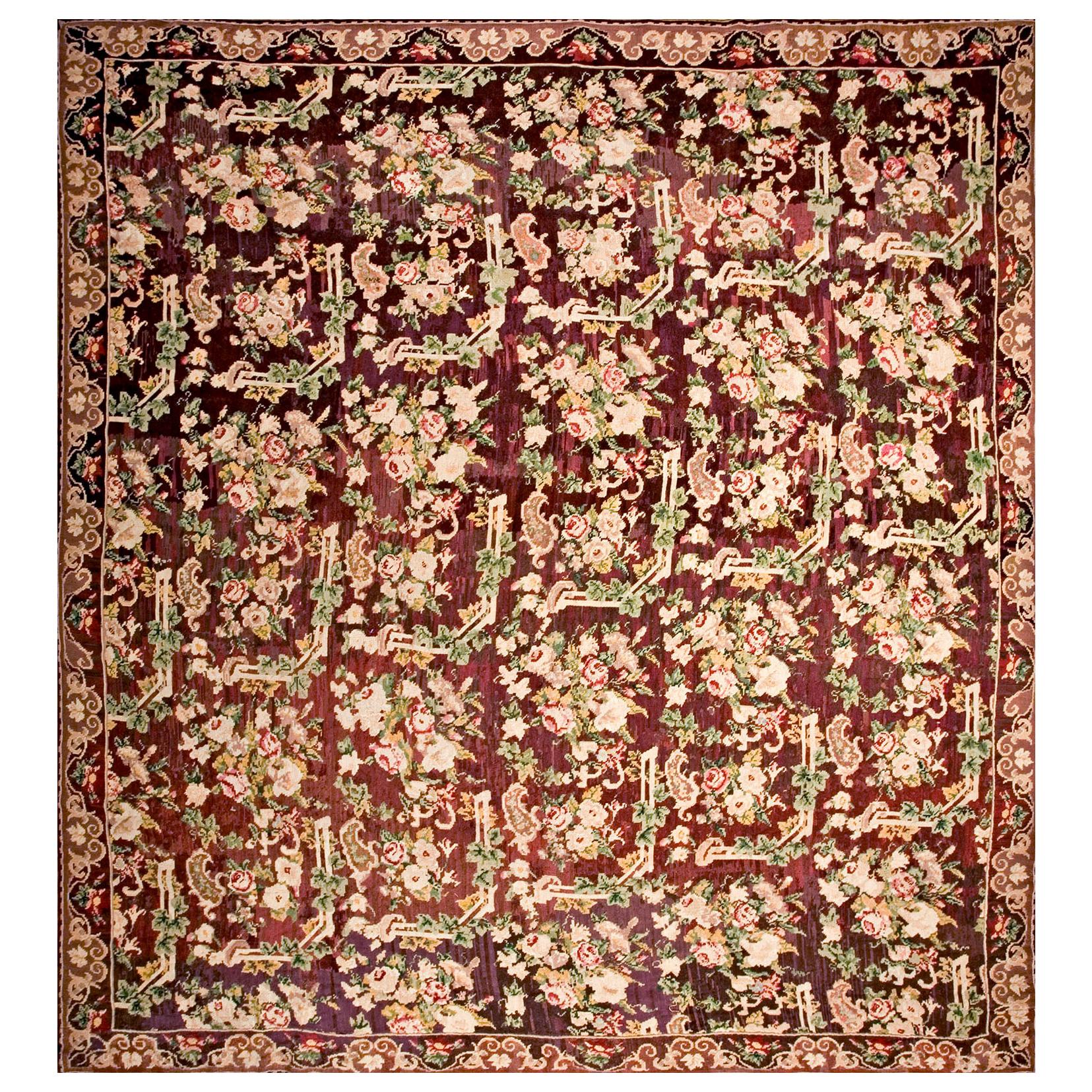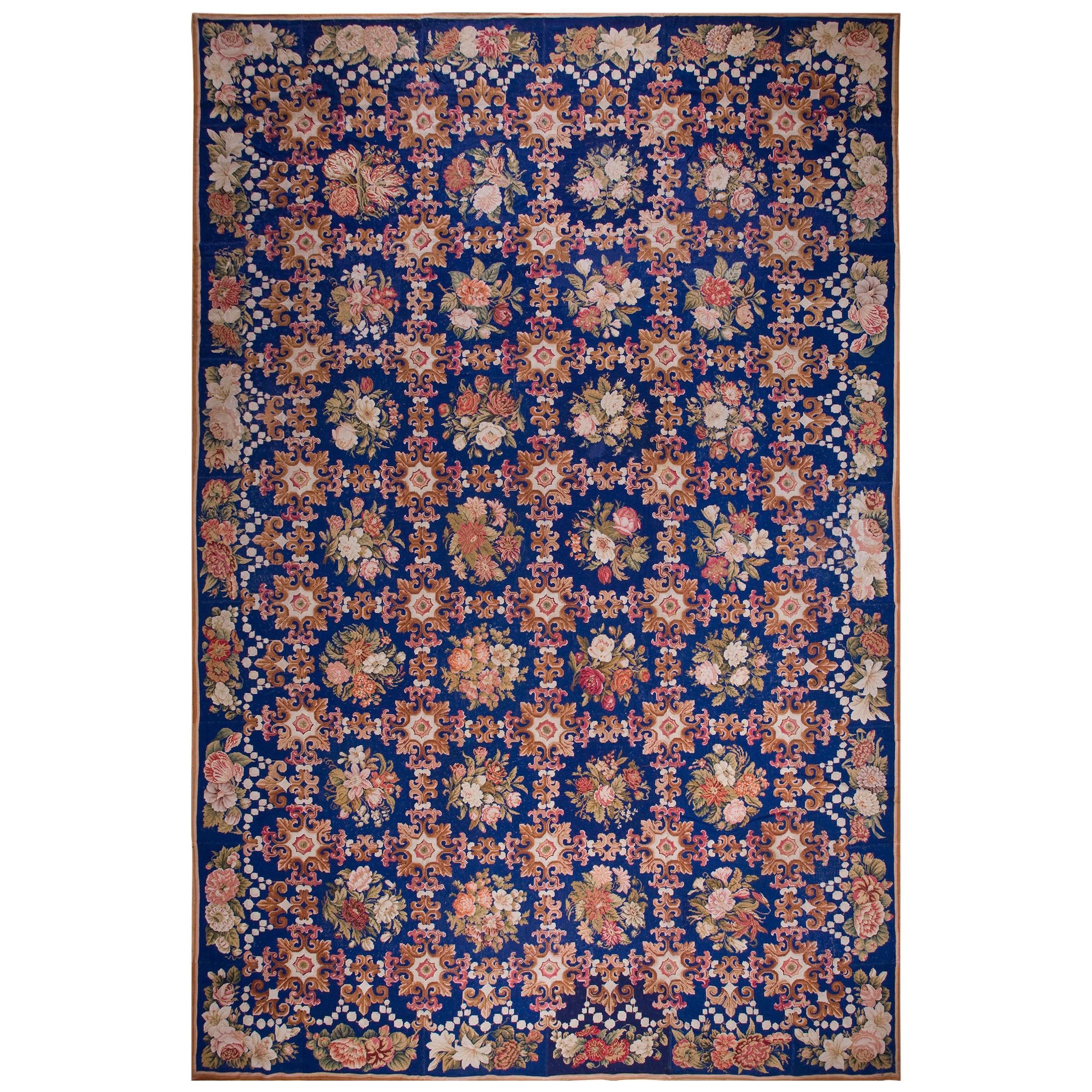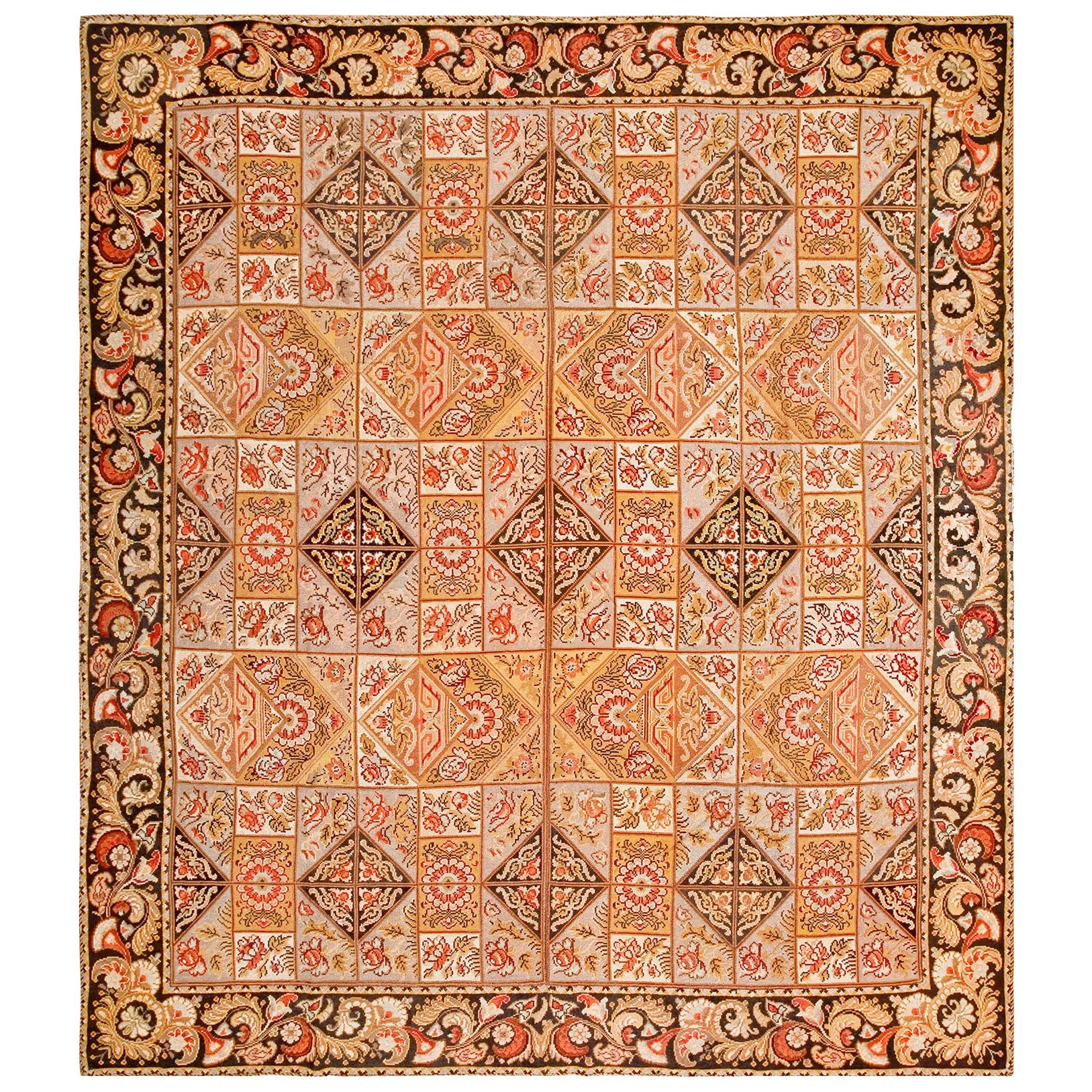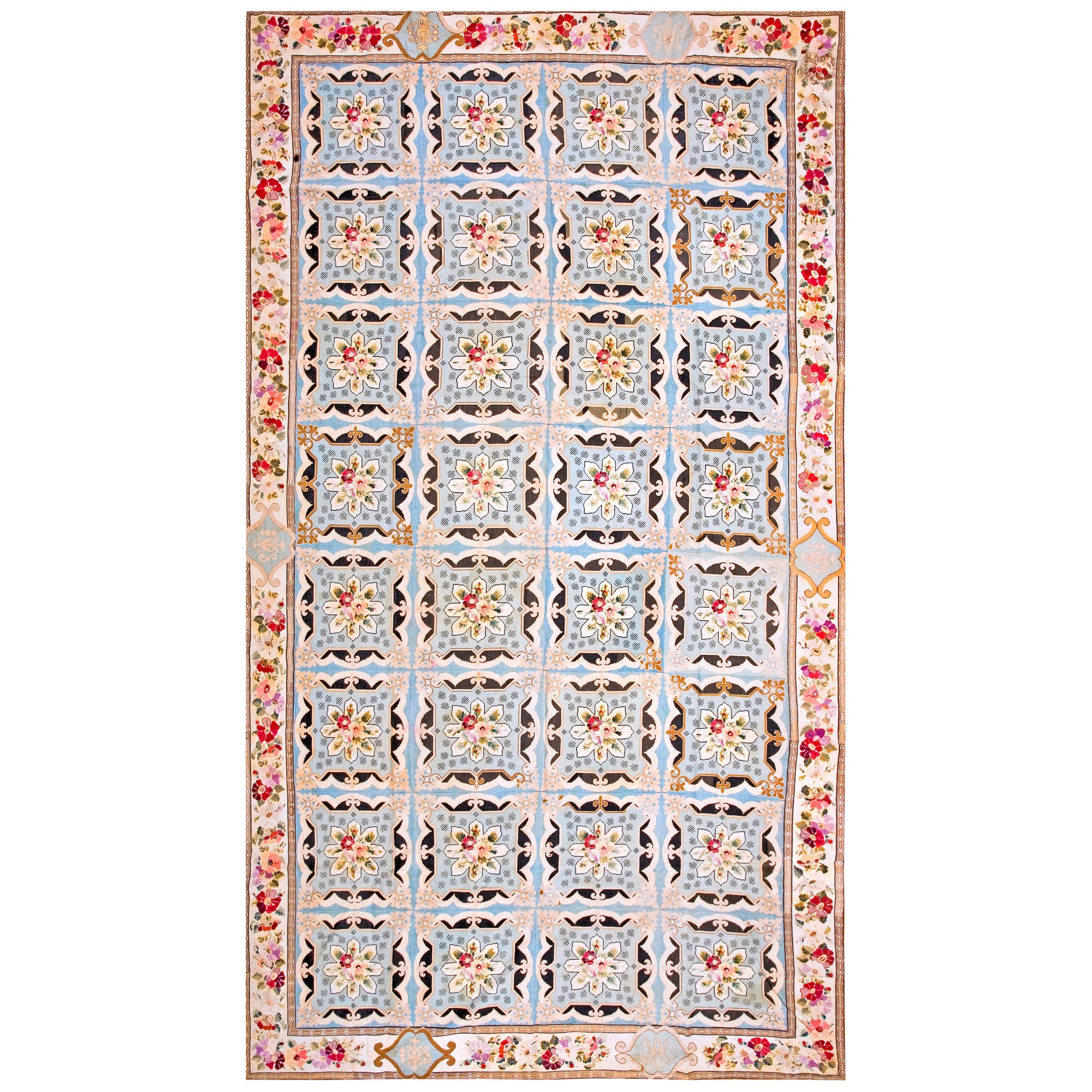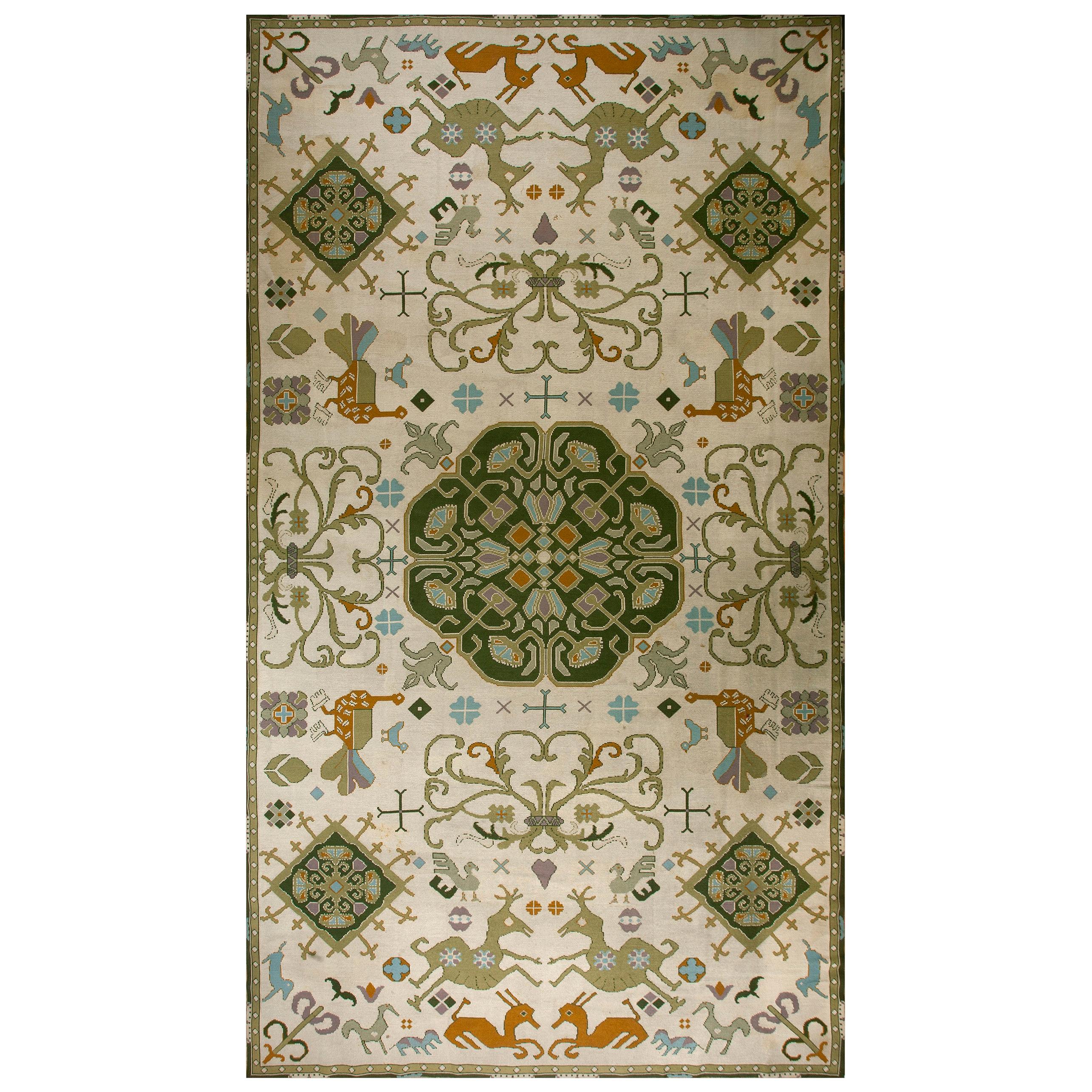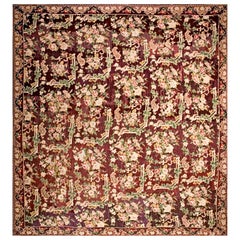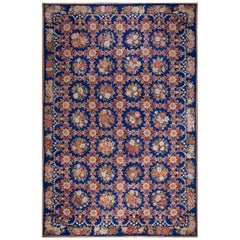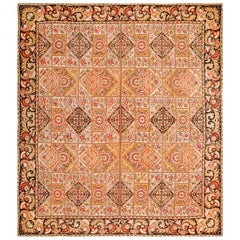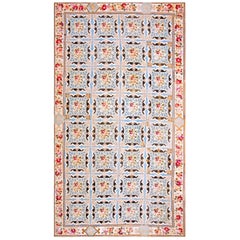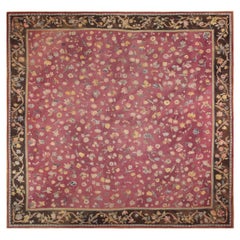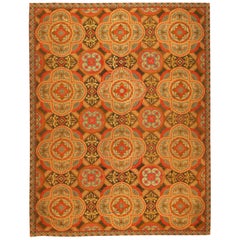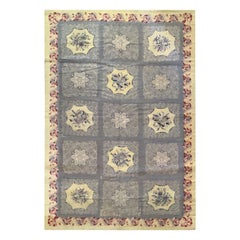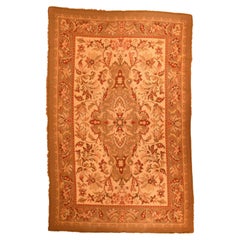Items Similar to Antique European Needlepoint Rug 4' 8" x 5' 6"
Want more images or videos?
Request additional images or videos from the seller
1 of 7
Antique European Needlepoint Rug 4' 8" x 5' 6"
$3,600
£2,752.39
€3,170.20
CA$5,044.70
A$5,631.94
CHF 2,951.05
MX$68,940.44
NOK 37,478.37
SEK 35,337.35
DKK 23,659.52
Shipping
Retrieving quote...The 1stDibs Promise:
Authenticity Guarantee,
Money-Back Guarantee,
24-Hour Cancellation
About the Item
Antique European needlepoint rug, size: 4'8" x 5'6".
About the Seller
4.8
Platinum Seller
Premium sellers with a 4.7+ rating and 24-hour response times
Established in 1995
1stDibs seller since 2019
423 sales on 1stDibs
Typical response time: 1 hour
- ShippingRetrieving quote...Shipping from: New York, NY
- Return Policy
Authenticity Guarantee
In the unlikely event there’s an issue with an item’s authenticity, contact us within 1 year for a full refund. DetailsMoney-Back Guarantee
If your item is not as described, is damaged in transit, or does not arrive, contact us within 7 days for a full refund. Details24-Hour Cancellation
You have a 24-hour grace period in which to reconsider your purchase, with no questions asked.Vetted Professional Sellers
Our world-class sellers must adhere to strict standards for service and quality, maintaining the integrity of our listings.Price-Match Guarantee
If you find that a seller listed the same item for a lower price elsewhere, we’ll match it.Trusted Global Delivery
Our best-in-class carrier network provides specialized shipping options worldwide, including custom delivery.More From This Seller
View AllAntique European Needlepoint Rug 12'8" x 14'0"
Located in New York, NY
Antique European needlepoint rug, measures: 12'8" x 14'0".
Category
Antique Early 1900s English Western European Rugs
Materials
Wool
Antique European Needlepoint Rug 13'6" x 20'6"
Located in New York, NY
Antique European needlepoint rug, size: 13'6" x 20'6".
Category
Antique 1830s English Western European Rugs
Materials
Wool
19th Century French Needlepoint Carpet ( 9'6" x 10'6" - 290 x 320 )
Located in New York, NY
19th Century French Needlepoint Carpet ( 9'6" x 10'6" - 290 x 320 )
Category
Antique 1880s French Western European Rugs
Materials
Wool
Antique European Needlepoint Rug 9'6" x 16'6"
Located in New York, NY
Antique European needlepoint rug
Size: 9'6" x 16'6".
Category
Antique 1870s English Western European Rugs
Materials
Wool
Antique European Needlepoint 11' 0" x 19' 8"
Located in New York, NY
Antique European needlepoint. Size: 11'0" x 19'8".
Category
Vintage 1930s Portuguese Western European Rugs
Materials
Wool
Antique European Needlepoint Rug 8' 8" x 10' 5"
Located in New York, NY
Antique European needlepoint rug, Size: 8'8" x 10'5".
Category
Antique 1860s English Western European Rugs
Materials
Wool
You May Also Like
Antique English Needlepoint Rug. 14 ft 3 in x 14 ft 8 in
Located in New York, NY
Square Antique Purple English Needlepoint Allover Floral Rug, Country of origin: England, Circa date: 1900. Size: 14 ft 3 in x 14 ft 8 in (4.34 m x 4.47 m)
Category
20th Century English Other Western European Rugs
Materials
Wool
Antique Needlepoint English Rug. Size: 7 ft 5 in x 9 ft 7 in
Located in New York, NY
Antique English Needlepoint, Country of Origin: England, Circa: 18th Century –Size: 7 ft 5 in x 9 ft 7 in (2.26 m x 2.92 m).
Category
Antique Late 18th Century English British Colonial Western European Rugs
Materials
Wool
19th Century Needlepoint Rug, N° 1179
Located in Paris, FR
A very pretty needlepoint rug from the 19th century with very pretty fresh colors.
Thanks to our Restoration-Conservation workshop and also Our know-how,
we are pleased to prese...
Category
Antique 1880s French Aubusson Western European Rugs
Materials
Wool
Antique European Needle Point Rug 4'9'' x 7'6''
Located in New York, NY
Antique European Needle Point Rug 4'9'' x 7'6''. In a totally Persian urban style, with a straw-cream field displaying a tall medallion sprouting curving and leafy stems, and enclosing leaves and florets. Field flowers are elaborately petalled. Coral-rust main border with petal palmettes, barbed leaves and a meandering vine. Wool embroidery...
Category
Early 20th Century European Western European Rugs
Materials
Wool, Cotton
1900s Antique French Needlepoint Rug
Located in Los Angeles, US
Needlepoint rugs were created using the traditional needlework weaving technique that is used to make everyday items from furniture to carpets and artwork. However, it has a fascinating history both as a hobby and as an industry. When many people think of carpets, they think of pile carpets or flat weave kilims, but needlepoint has also been used to create beautiful carpets. These carpets are durable and an important part of carpet history.
Archaeologists and scholars consider the roots of needlepoint to have been around 1500 BC. They consider the first needlepoint to include the fine diagonal stitches that were used to sew tents together by the ancient Egyptians. The art eventually evolved into tapestry weaving. However, a tapestry weaving differs significantly from needlepoint in that it uses a loom and vertical warp.
Tapestry weaving is closer to the weaving of kilims and pile rugs than canvas work. However, some still include tapestry weaving in the category of needlepoint because of the fine work that appeared during the late Renaissance. It can have a similar appearance to the untrained eye. Technically, tapestry weaving and needlepoint are not the same, and they do not use the same technique.
The first actual needlepoint rugs and needle-points began to appear in the late Renaissance. Needlepoint is worked by creating stitches on a stiff canvas. The canvas is typically made from jute or linen and is quite durable. Pieces from the Renaissance were used to cover footstools, chairs, pillows, bed headboards, and other furnishings. They were also used as table coverings and wall coverings. You could also find them on many small items such as purses, shoes, and various adornments for clothing.
During the Renaissance, the craft reached a high level of skill, and the designs became incredibly detailed and realistic. They mimicked many of the subjects and styles of famous paintings of the time. They created florals, still life designs, scenes, and geometric tiled pieces. Some of them mimicked the designs found in Persian Carpets.
Needlepoint reached its peak popularity in the 19th century when it was considered a proper occupation for a lady. Needlepoint and embroidery held a similar place in societal status at the time. During this time, the work became finer, with some of the canvas reaching a high level of detail. The level of detail is determined by counting the number of mesh in an inch. During this time petit point by French needlewomen could have a mesh count as high as 45 mesh. This allowed women to create highly intricate designs with incredible levels of detail.
It is possible to find many antique pieces of needlepoint besides rugs. Needlepoint rugs were popular in France and Spain, where the technique was adapted to create highly intricate designs that mimicked the designs in architecture and fashion. They were popular because they were durable, and it could be fashioned into a variety of items. The canvases themselves were durable, and the wool that they used was also strong, which means that many of the pieces were able to withstand daily use. We have many artifacts that have survived from this time period.
Needlepoint rugs are important collectibles because they are different from the pile rugs and kilims that are typically found on the market. Needlepoint carpets are special because they take many hours to create, especially larger works. Needlepoint pieces of any type became popular throughout Europe during the 19th century. It is still a popular hobby today, but perhaps one of the most interesting stories is that of the Portuguese needlewomen of Arraiolos.
The story of these women and their beautiful carpets begins in 1492. Needlepoint was a popular occupation in Spain, which had a large population of Moors and Jews. They were an integral part of Spanish culture. However, in 1492, Queen Isabella of Spain issued a proclamation that gave these ethnic groups the order to pack their bags and board ships headed...
Category
Antique Early 1900s Other Russian and Scandinavian Rugs
Materials
Wool, Cotton
Antique Arraiolos Rug with European Country Charm, Portuguese Needlepoint Rug
Located in Dallas, TX
77210 Antique Portuguese Needlepoint Arraiolos Rug, 07’11 x 11’02. Arraiolos rugs are a celebrated form of traditional Portuguese craftsmanship, originating from the town of Arraiolo...
Category
Early 20th Century Portuguese Country Western European Rugs
Materials
Wool
$3,920 Sale Price
43% Off
